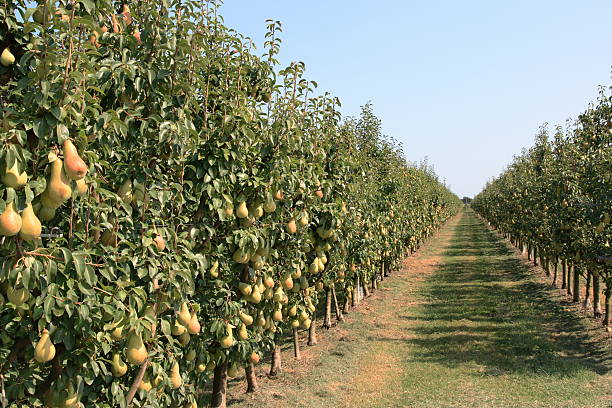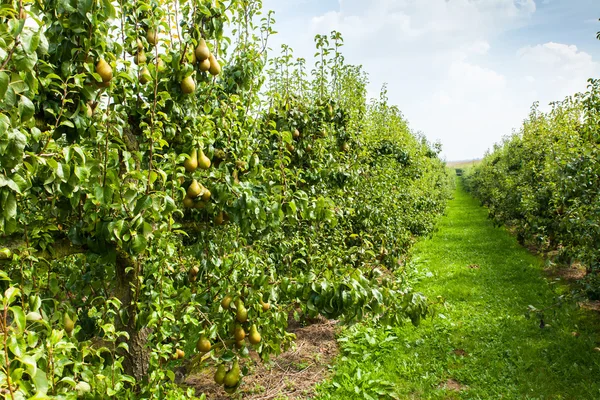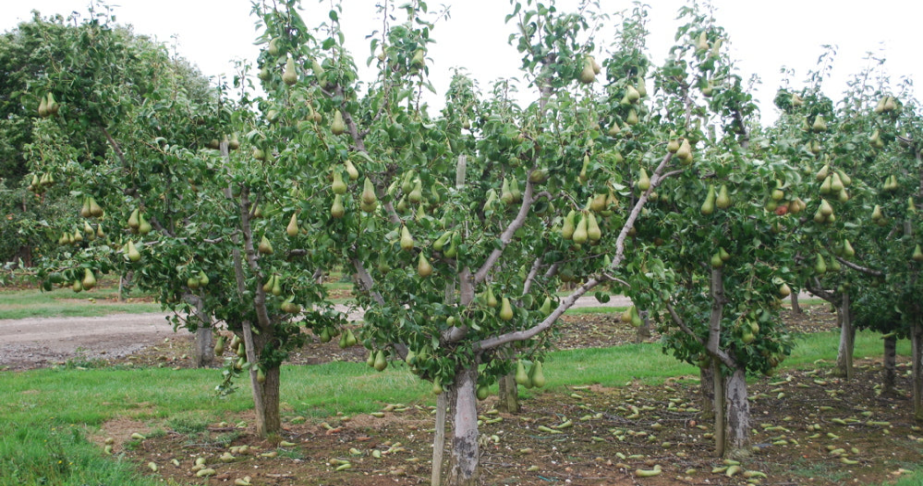Pear trees are prized for their delicious fruits and beautiful appearance.
Whether you’re a passionate home gardener or an orchard enthusiast, nurturing healthy and productive pear trees is a rewarding endeavor.
To ensure their optimal growth and longevity, providing the right care is essential.
One important aspect of pear tree care is selecting the best mulch.
Mulching not only enhances the aesthetics of your garden but also plays a vital role in improving soil fertility.
Best Mulches for Pear Trees
Let’s explore the top options available.
Wood Chips and Shredded Bark
They offer a range of benefits that contribute to the health and growth of pear trees.
Wood chips and shredded bark provide excellent weed suppression by forming a thick layer that inhibits the growth of unwanted plants.
This reduces competition for nutrients, water, and sunlight, allowing the pear trees to thrive without having to compete with invasive weeds.
These mulches also help retain soil moisture by reducing evaporation.
By creating a barrier between the soil and the air, they slow down the rate at which water evaporates from the soil surface.
This ensures that the pear trees have a consistent and adequate water supply, especially during dry periods.

Pros
- Wood chips and shredded bark create a dense barrier that prevents weed growth. This reduces competition for nutrients and water
- These mulches help retain soil moisture by reducing evaporation, which ensures a consistent water supply for the pear trees
- As wood chips and shredded bark break down, they contribute organic matter to the soil, improving its structure and fertility over time
- They provide an additional layer of insulation that protects the tree’s roots from extreme temperatures
- Wood chips and shredded bark give a natural and visually appealing look to the garden
Cons
- Fresh wood chips may temporarily deplete soil nitrogen as they undergo decomposition. To mitigate this, allow the wood chips to compost for a few months before using them around the trees
- They can create a favorable habitat for pests like slugs, snails, and insects. Regular monitoring and management are necessary to prevent infestations
Related: Best Mulches for Avocado Trees
Straw and Hay
Straw and hay are organic mulch options that have been used for centuries to protect and nurture plants.
They serve as effective mulches by forming a physical barrier that inhibits weed growth.
This reduces the need for manual weeding and helps maintain a cleaner and more organized garden.
One of the key advantages of straw and hay is their ability to retain soil moisture. They create a protective layer on the soil surface that reduces evaporation and prevents water loss.
This is particularly beneficial during hot and dry periods when water availability may be limited.
Pros
- Straw and hay create a barrier that inhibits weed growth
- They help retain soil moisture and prevent rapid evaporation
- Straw and hay provide insulation that protects the roots from extreme temperatures during summer and winter
- As the mulches decompose, they add organic matter to the soil and enhance its structure and fertility
Cons
- Straw and hay break down relatively quickly, requiring more frequent reapplication compared to other organic mulches
- These mulches can attract pests like rodents and insects, which may cause damage to the trees or become a nuisance in the garden
- Hay may contain weed seeds, leading to potential weed issues if not properly composted or managed
Compost and Leaf Mold

These are organic mulches that offer numerous benefits to pear trees.
Compost is a nutrient-rich material that results from the decomposition of organic matter, such as kitchen scraps, yard waste, and plant residues.
Leaf mold, on the other hand, is a product of the decomposition of leaves over time.
Both compost and leaf mold contribute to soil fertility and provide a range of advantages for pear trees.
Related: Rabbit Manure for Fruit Trees?
When used as mulch, compost and leaf mold help improve soil structure by increasing its water-holding capacity, porosity, and nutrient content.
They also enhance microbial activity in the soil and promote a healthy ecosystem that supports the growth and vitality of pear trees.
Pros
- Compost and leaf mold are rich in organic matter and nutrients; they provide a steady supply of essential elements for the pear trees
- They enhance soil structure, fertility, and microbial activity
- The mulches help retain moisture and reduce the need for frequent watering
- They can effectively inhibit weed growth
Cons
- Compost and leaf mold should be applied in a thin layer to avoid suffocating the roots or creating a barrier that inhibits gas exchange
- Depending on the scale of the garden, obtaining sufficient quantities of compost and leaf mold may require additional effort or expense
Gravel and Stones
These inorganic mulches provide excellent weed suppression by forming a durable and non-organic barrier that inhibits weed growth.
This reduces the need for regular weeding and maintenance, making them a low-maintenance mulch option.
These mulches also have excellent drainage properties.

They allow water to flow freely through the gaps between the stones. This prevents waterlogging and promotes good soil drainage.
This is particularly beneficial for pear trees, as excessive moisture can lead to root rot and other diseases.
Related: 6 Best Mulches for Cherry Trees
Pros
- Gravel and stones have a long lifespan and require less frequent reapplication compared to organic mulches
- They enhance soil drainage and prevent waterlogging around the tree’s roots
- They’re ideal for pathways or areas with frequent foot traffic
Cons
- Gravel and stones don’t contribute organic matter or nutrients to the soil
- In hot climates, lighter-colored stones can reflect sunlight and potentially increase soil temperature
- The appearance of gravel and stones may not be as visually appealing to some gardeners compared to organic mulches
Landscape Fabric and Plastic Sheeting
These are also inorganic mulch options that provide effective weed control and moisture retention.
Landscape fabric is a permeable material that allows air and water to penetrate while preventing weed growth.
It acts as a physical barrier that blocks sunlight from reaching weed seeds and prevents them from germinating.
Plastic sheeting, on the other hand, is a non-permeable material that completely blocks sunlight and prevents weed growth.
It creates a seal over the soil surface, reducing evaporation and retaining moisture.
Pros
- Landscape fabric and plastic sheeting prevent weed growth by acting as a physical barrier
- These mulches have a long lifespan and require minimal maintenance
- They help retain soil moisture by reducing evaporation
- They’re useful in areas where a more permanent mulch solution is desired, such as commercial orchards or large-scale gardens
Cons
- Landscape fabric and plastic sheeting don’t contribute organic matter or nutrients to the soil
- These mulches can hinder water penetration into the soil, potentially leading to excess moisture retention if not properly installed with adequate drainage
- They may not be visually appealing, especially in residential gardens where aesthetics are a priority
Related
- Best Gravels to Walk on Bare Feet
- 10 Best Mulches for Wet Areas
- Top 10 Wholesale Mulch Suppliers
- Grass Mulching Pros and Cons
- Gorilla Hair Mulch Pros and Cons
- Best Mulch for Perennials
- Top 7 Disadvantages of Decomposed Granite
- 8 Best Mulches for Citrus Trees in Pots

